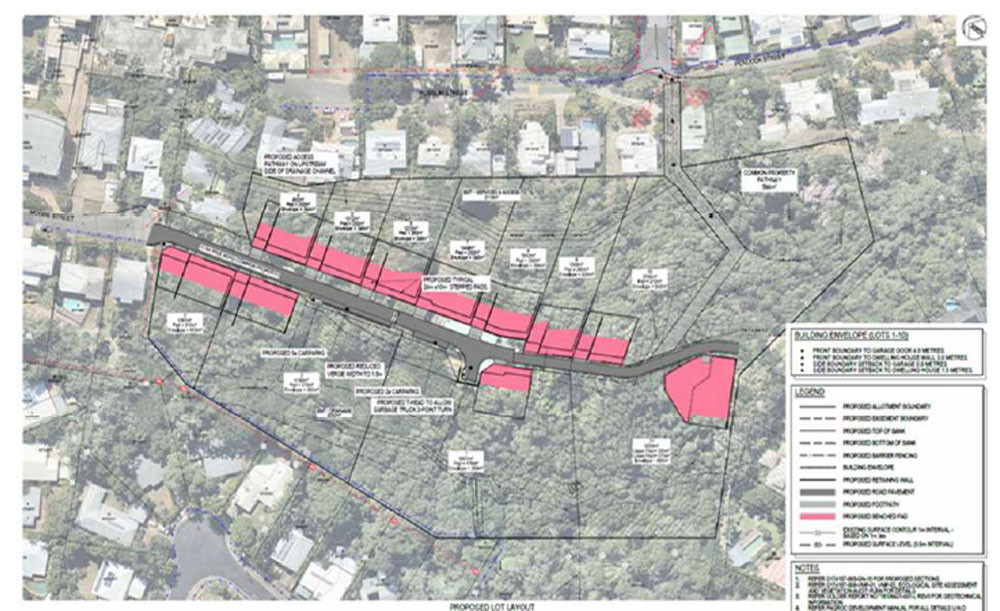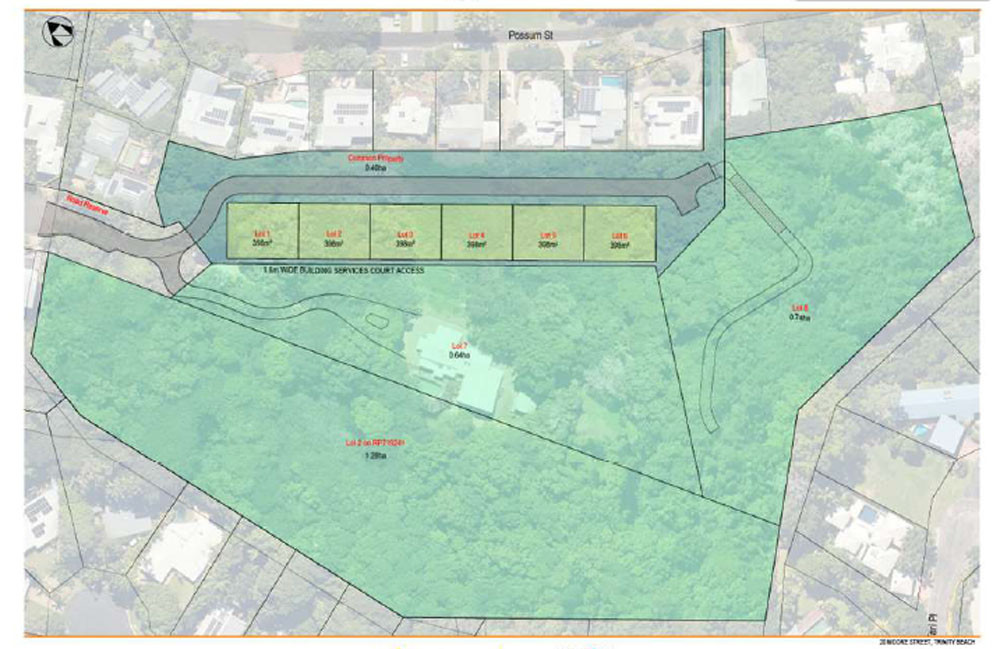General News
11 July, 2025
‘It’s better than before’
DEVELOPER Nathan Verri believes his new development application (DA) will provide a better result than the existing approval.

“We are long time locals, fifth generation, with my wife (Julie) having lived in Trinity Beach the majority of her life, where we hold at heart with great intent ensuring deliverance of a better, well rounded outcome of which we have produced with the proposed DA change,” he said.
“We respect the community’s voice and welcome transparency.
“The existing development approval permits more extensive works than the DA change we’ve proposed.
“We have taken great care in our approach and used professional guidance from local engineers, geotechs, landscape architects, visual impact consultants, surveyors and planners.
“Our approach is environmentally sensitive and is also supported by generations of connection to the area.
“We’re offering fewer homes and a smaller footprint overall, along with more vegetation, better infrastructure and long-term benefit for all involved.”
Mr Verri has responded to the following concerns:
Retaining walls and road too close to rear boundaries – “All placements have been assessed by licensed engineers and consultants. We have chosen to set back our retaining walls into our land, unlike typical developments which retain on boundaries. They’re pulled back to allow privacy buffers, more screening vegetation and structural safety. These retaining walls protect both sides of all adjoining properties and serve as privacy guardians, not intrusions”.
Material change of use to short-term accommodation – “Our proposed short-stay homes sit near tourism hubs, including beach, dining and infrastructure, where this type of use is appropriate. In contrast, many unapproved short-stay homes in disconnected areas are removing affordable long-term rentals from the market. Building in the right zones helps put housing back where it’s needed most. These homes will be costly to rent long-term, so they’re unlikely to reduce available rentals, unlike current patterns seen in less suitable locations.”

Clearing mature trees and wildlife disruption – “We’ve gone above and beyond to monitor, document and design to minimise impact on the existing habitat. Cameras and acoustic equipment have been active for months, informing our consultants’ reports that are accessible by the public on the council’s website. Yes, some clearing must occur, but the DA change:
Protects significantly more vegetation than the current ‘existing approved’ DA
Avoids ridge-line deforestation
Addresses existing noxious weed infestations
Less clearing than existing DA via smarter planning”.
Threat to Trinity Beach’s unique visual identity – “The current ‘existing approved’ DA builds across the skyline ridge. However, the newly proposed DA change positions homes below the ridge, blending architecture seamlessly into the hillside with vegetative screening. Visual assessments show minimal skyline disturbance. Thoughtful placement of these homes has created a far smaller footprint compared to the ‘existing approved’ DA, allowing us to preserve the skyline ridge”.
Excavation noise, traffic and dust – “All works will be managed by licensed contractors operating under strict environmental and safety protocols. These impacts are anticipated in advance and monitored and minimised through the processes. This is a carefully staged progress”.

Stormwater impacts on Possum St and foreshore – “Our design improves stormwater control compared to the current situation.
Existing runoff will be captured, slowed and redirected through engineered infrastructure
Discharge points are legal, managed and aligned with council standards
An overland flow path ensures protection even in rare events like system blockages
We’re catching what the hillside used to spill, protecting homes and shoreline along the way.”
Construction timeline and wet season concerns – “We anticipate a timeline of approximately three years with retaining walls to be completed before the first wet season to ensure stabilisation of the slope. We will build with the seasons, not against them. And keep the community informed at every step.
Each phase will be planned to:
Notify residents well in advance.
Mitigate seasonal risks through contractual obligations.”


